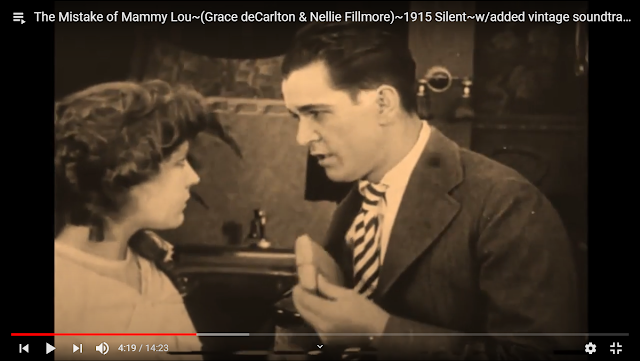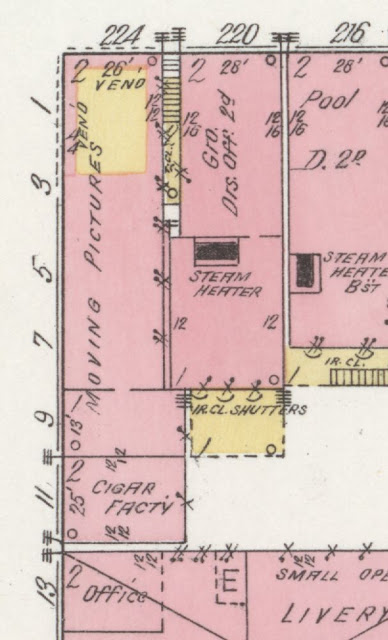This blurry picture appeared in the Chippewa Herald Telegram on January 18th, 1916. No doubt it was mailed to the editors by Mr. Smith himself.
Accompanying it is an article that contains a longish letter from Bunny. It reads in part:
"BUNNY SMITH SPEAKS"
"Bunnie" Smith, son of Mrs. Jane Smith of the Taylor Block, and a product of Chippewa Falls, has made good in the moving picture world, and the accompanying picture shows him as he appears in "His Majesty the King", a feature that took well. "
The article goes on to say that he had been in pictures for less than two years and that he was writing from Jacksonville Florida. Most of the article is actually a letter from "Bunny" to the folks back home...
"Bunny" mentions that he had been in approximately 20 pictures in less than a year, and that he got the job because it was noted that he looked a little like a fellow named Nolan Gane who played many of the "juvenile" parts for a production company called Thanhouser. After just a few days of stand in work Mr. Smith got the job full time when Gane died. Gane was at the time of his death 23 years old. Too young to die. But getting on a bit for "juvenile" roles.
I figured it would be easy to learn more about young Mr. Smith. IMDB is a pretty good repository of film knowledge even from the early days. So I started with this list of films that "Bunny" said he'd been in:
Most of them were actually listed....but no Bunny Smith. In fact nothing close. Fine, I figured if I was trying to make it in show biz I'd quickly ditch a silly nickname and a boring last one. But of the few recurring actors common to these films, nobody matched at all. And of course the film he was supposedly going to star in does not appear. It was likely never made.
Something was up here.
In doing a bit more research I learned things about the early film industry. These are all products of an extremely prolific company called Thanhouser. How prolific? In 1915, the year Mr. Smith seems to have been with them, they put out 207 films. Allowing for an occasional holiday or time to move from their New Rochelle NY to Jacksonville studios, that's about four a week. A great deal more can be learned at this site. It lists about 1000 biographies of people associated with Thanhouser. No Bunny Smith.
So what to make of all this? Well, I don't doubt that he did appear in films. The description of some of these movies and shorts makes it clear that there were many uncredited minor roles. "Spear Carriers" they were called back in the day of live stage. Although in the above photo Bunny is instead equipped with a saber.
Although an absent first name and unhelpfully common family name make for tough sledding, I have a few guesses about Bunny.
1. He was probably in his 20's. "Juvenile" roles were not played by actual juveniles. The pace of making four films a week must have been crushing, not something kids would be doing.
2. He grew up around the movies. His mother, and presumably Bunny as well, lived in the Taylor block.....and right downstairs was the Lyric theater. I'm guessing Bunny worked there and/or saw every movie they played.
3. There is a sad family story. Mrs. Smith lived in the hotel permanently. No Mr. Smith is mentioned. I was able to find just a few wisps of additional information. Bunny had two sisters, one married and living in Superior Wisconsin. The other, Irene, was often ill. I think Bunny might have been writing home with an exaggerated story of success to help cheer up his mom and sister.
Eventually when access to archives gets easier I'll track down a few more details. But for now let's leave Bunny Smith in Jacksonville Florida circa 1916....dreaming of becoming a movie star. And, for all we know, maybe actually doing so under a catchier name!
--------------------
Addendum: One of the films Bunny claimed to be in is actually on YouTube!
This is "The Mistake of Mammy Lou". Quite the time capsule.

















































